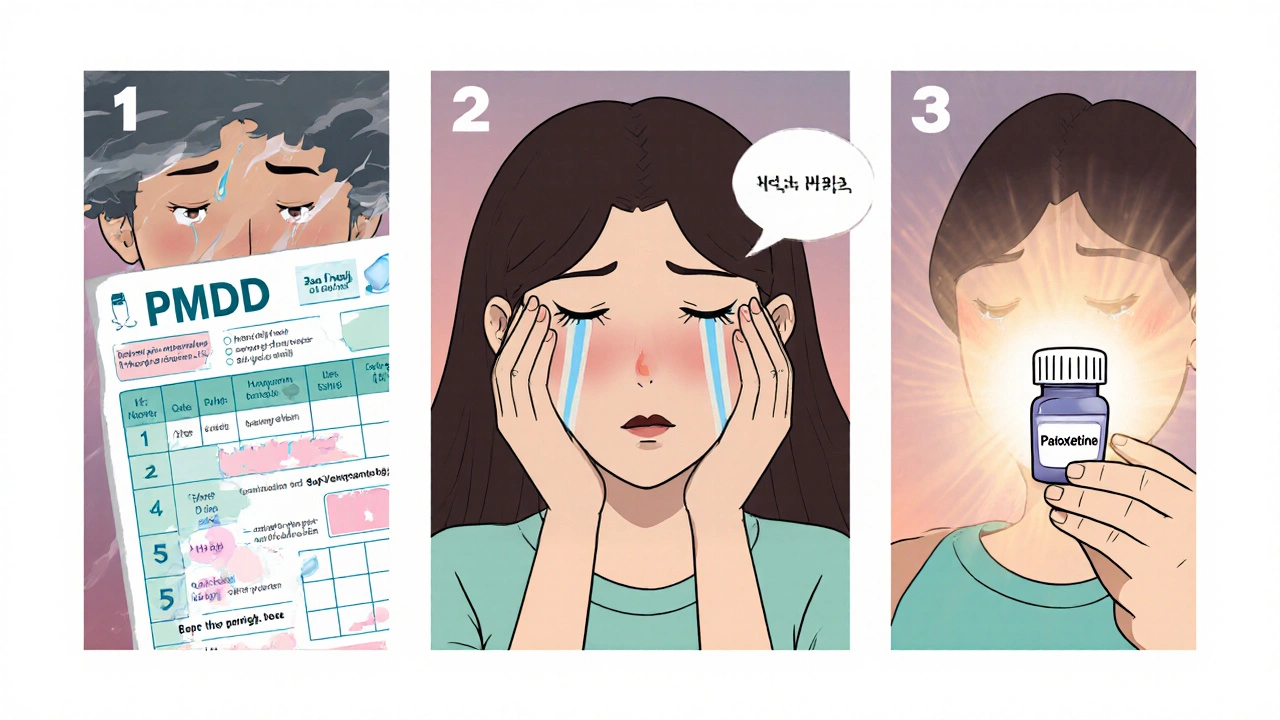Premenstrual Dysphoric Disorder: Symptoms, Causes, and What Works
When your mood swings, irritability, and sadness hit hard every month—so bad that they mess with your job, relationships, or daily life—you’re not just "having a bad period." You might be dealing with premenstrual dysphoric disorder, a severe, biologically driven mood disorder tied to the menstrual cycle. Also known as PMDD, it affects about 5% of women of reproductive age and is often mistaken for anxiety or depression that just happens to show up before your period. Unlike regular PMS, PMDD doesn’t fade with a good night’s sleep or a cup of tea. It’s a real medical condition with measurable changes in brain chemistry, especially around serotonin and estrogen.
What makes PMDD different? It’s not just feeling down. It’s crying for no reason, feeling so angry you snap at loved ones, having panic attacks, or feeling utterly hopeless in the days before your period. These symptoms don’t appear randomly—they follow a strict pattern, starting 1–2 weeks before menstruation and disappearing a few days after it begins. If this sounds familiar, you’re not alone. Many women suffer in silence because doctors still don’t always recognize PMDD. But it’s not in your head—it’s in your hormones and your brain’s response to them.
PMDD is linked to how your body processes hormones like estrogen and progesterone. Even if your hormone levels are normal, your brain might react to them like they’re out of balance. That’s why treatments like SSRIs—medications usually used for depression—can work wonders for PMDD, even if you’ve never been depressed. Some women find relief with birth control that stops ovulation, others with calcium, vitamin B6, or lifestyle changes. But the key is tracking: writing down your symptoms for at least two cycles helps doctors confirm it’s PMDD and not something else.
You’ll find posts here that dig into the science behind PMDD, how it overlaps with other conditions like depression and anxiety, and which medications and supplements actually help. You’ll also see real stories about how women manage PMDD while working, parenting, or staying in relationships. No fluff. No vague advice. Just what works—and what doesn’t—based on clinical evidence and lived experience.
How Paroxetine Can Help Treat Premenstrual Dysphoric Disorder
Learn how paroxetine, an FDA‑approved SSRI, treats Premenstrual Dysphoric Disorder, including dosage, effectiveness, side‑effects, and comparisons with other therapies.
